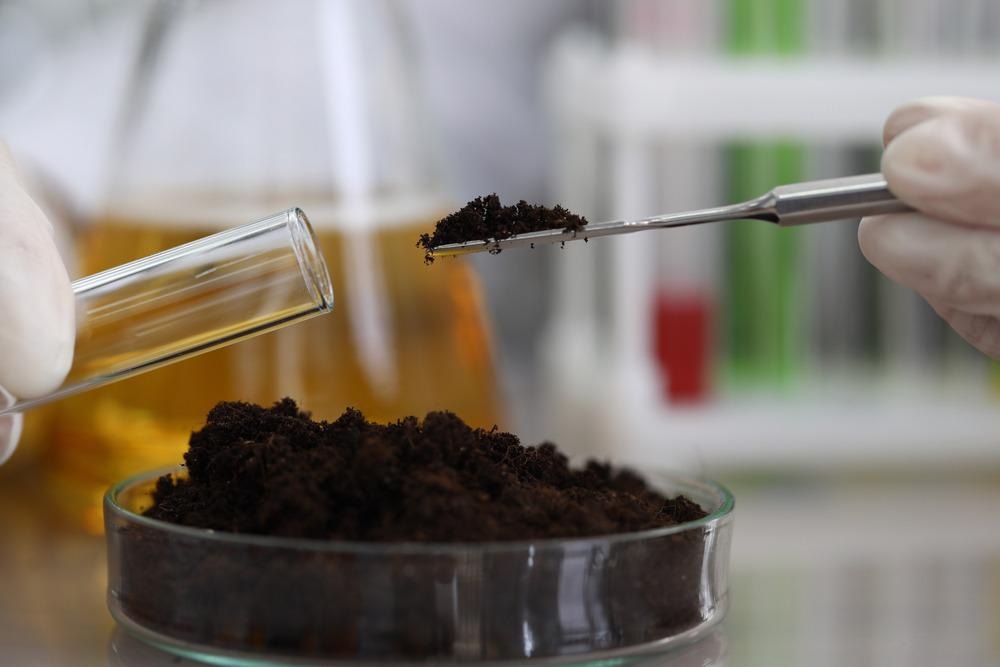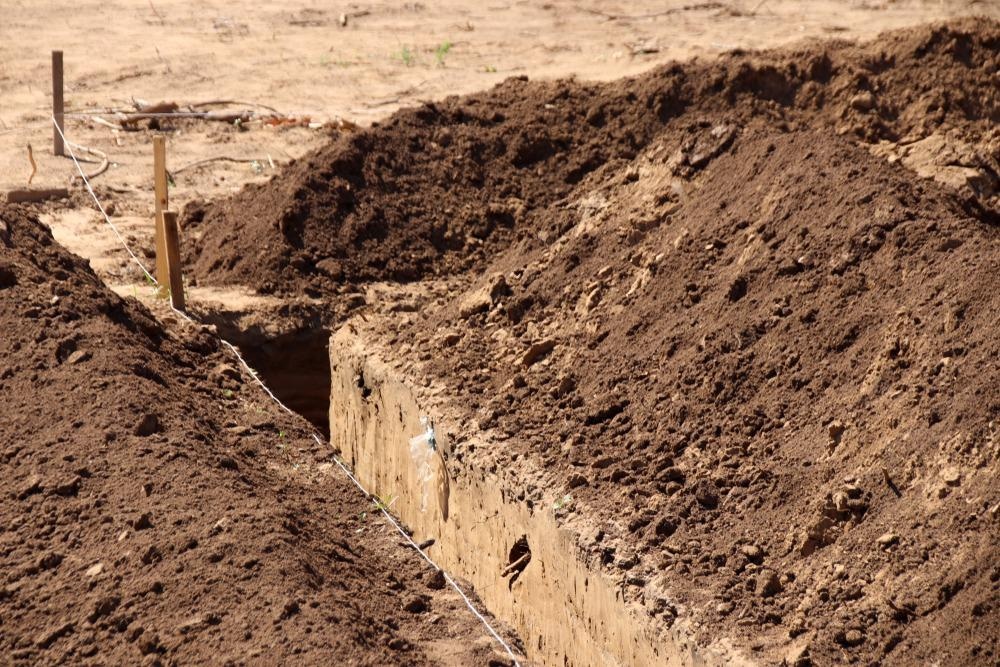The use of biopolymers in soil improvement has attracted considerable attention and research in recent years. Replacing chemical stabilization agents like cement can reduce the overall carbon dioxide (CO2) emissions caused by construction and infrastructure projects.

As the latest International Panel on Climate Change (IPCC) report confirms, drastically reducing CO2 emissions is the only hope that we have to avoid the worst possible outcomes of climate change over the next century
The Warming Planet and Its Growing Population
This article is part of AzoM’s Industrial Response to Climate Change series that explores the issues arising from the 2021 IPCC report. The IPCC regularly convenes to review the latest scientific research in environmental sciences and publishes regular reports on this wide-ranging literature review.
The latest IPCC document makes for troubling reading. Many effects of climate change are irreversible, as large-scale climate and weather cycles have been significantly altered. The report warns that bringing CO2 emissions to net-zero, such as using carbon capture and drastically reducing the amount of carbon burned for energy, is the only way to avoid the worst-case scenarios that the environmental science community predicts.
However, population growth and increasing urbanization are also inevitable in the coming years. These increasing populations and the related need for more urbanized spaces lead to higher demand for infrastructure and construction projects. Such projects are responsible for a large proportion of energy use, CO2 emissions, and other environmental harms, including pollution and land-use changes.
This rapid population growth and spreading urbanization also lead to the need for new constructions on land that had previously been too difficult to build on. Buildings will increasingly have to be constructed over soft or otherwise unfavorable soil, and in more adverse conditions.

Image Credit: H_Ko/Shutterstock.com
Environmental Problems With Mechanical and Chemical Soil Improvement
Buildings and other infrastructures like roads and runways need solid foundations to perform safely at acceptable engineering levels. If soil is of poor quality, too wet, too loose, or too soft, then soil improvement must take place before the rest of the construction can start.
Geotechnical approaches to soil improvement include mechanical, biological, and chemical techniques. At the most basic mechanical level – and the most costly – poor quality soil is dug out of the site and replaced with aggregate. This solution is both labor- and energy-intensive, contributing to high CO2 emissions in construction and infrastructure projects.
Chemical and biological soil stabilization instead work with the soil that is already there. Small quantities of specific additives are mixed to make it stronger and more durable. As they eliminate the need for quarrying aggregate, digging out unsuitable soil, and transporting materials present in mechanical-geotechnical solutions, chemical and biological processes like this are much more sustainable.
Cement, along with lime, is one of the most widely used chemical stabilizing agents for geotechnical purposes. It performs well in these applications and is readily available, often as a byproduct from cement manufacturers in the form of concrete dust.
This material reacts with the soil, solidifies, and stabilizes into a weak form of concrete referred to as soil cement. Applying it is relatively straightforward; cement only has to be mixed through the appropriate amount of soil beneath a construction project. Mechanical processes like soil compaction are sometimes employed also.
Cement, however, creates significant amounts of CO2 emissions in its manufacture and transportation. Its manufacture releases carbon dioxide directly through heating calcium carbonate and indirectly by consuming large amounts of energy. Because of this, cement alone accounts for 8-10% of human-induced CO2 emissions worldwide. Approximately 4 billion tons of cement are produced each year.
As well as causing large amounts of greenhouse gas emissions, when acting as a chemical stabilizing agent for soil improvement, there are additional environmental risks. It prevents vegetation growth, leads to groundwater contamination, and is a cause of heat islands' creation.
Biological Alternative to Mechanical and Chemical Geotechnical Engineering
New biological geotechnical engineering techniques such as microbial-induced carbonate precipitation (MICP) have already come under scrutiny and proven to be effective alternatives to mechanical and chemical geotechnical engineering.
MICP works by introducing microbes to the soil alongside cementation reagents to create an environment that is ideally suited for the rapid growth of bacteria. This growth leads to desirable engineering properties in otherwise poor-quality soil.
There are certain disadvantages entailed with this technique, though. Its application is limited to environments with coarse-grained soil, and the rapid bacteria growth leads to the generation of effluent ammonia. Introducing large communities of microbes to new soil ecosystems also contains broader pollution risks for the local habitat.

Image Credit: photowind/Shutterstock.com
Can Biopolymers Overcome These Challenges?
Recent research suggests that biopolymers can overcome these challenges, providing a more environmentally-friendly approach to geotechnical engineering. Biopolymers are chemical stabilizing agents that work in similar ways to traditional materials like cement and concrete.
Studies of biopolymer materials including Guar Gum (GG), Xanthan Gum (XG), Chitosan (CHI), and Beta 1,3/1,6 Glucan (BG) are effective chemical stabilizing agents for soil improvement. Xanthan Gum, Guar Gum, and Beta 1,3/1,6 Glucan are reported as being the most effective in this application.
These biopolymer chemical stabilizing agents overcome many of the problems with traditional methods: there is no need to dig, quarry, and transport large amounts of material as there is in mechanical approaches; there is no major CO2 emissions cost and pollution as there is in cement use; there is no risk of introducing new microbial communities as there is in biological approaches.
While researchers agree that biopolymers are a promising new geotechnical engineering solution, their widespread adoption is still not assured. It is agreed that more research is needed to drive industry adoption.
--
Industrial Response to Climate Change
This article is a part of the IPCC Editorial Series: Industrial Response to Climate Change, a collection of content exploring how different sectors are responding to issues highlighted within the IPCC 2018 and 2021 reports. Here, Materials showcases the research institutions, industrial organizations, and innovative technologies driving adaptive solutions to mitigate climate change.
References and Further Reading
Chang, I. et al. (2020) Review On Biopolymer-based Soil Treatment (BPST) Technology In Geotechnical Engineering Practices. Transportation Geotechnics. Available at: https://doi.org/10.1016/j.trgeo.2020.100385.
IPCC. (2018) Summary for Policymakers. Global Warming of 1.5°C. An IPCC Special Report on the impacts of global warming of 1.5°C above pre-industrial levels and related global greenhouse gas emission pathways, in the context of strengthening the global response to the threat of climate change, sustainable development, and efforts to eradicate poverty. Available at: https://www.ipcc.ch/ [Accessed 9 September 2021].
IPCC. (2021) Summary for Policymakers. Climate Change 2021: The Physical Science Basis. Contribution of Working Group I to the Sixth Assessment Report of the Intergovernmental Panel on Climate. Available at: https://www.ipcc.ch/report/ar6/wg1/downloads/report/IPCC_AR6_WGI_SPM.pdf [Accessed 9 September 2021].
Chatham House (2018) Making Concrete Change: Innovation in Low-carbon Cement and Concrete. Chatham House. [Online] Available at: https://www.chathamhouse.org/2018/06/making-concrete-change-innovation-low-carbon-cement-and-concrete.
Fatehi, H. et al. (2021) Biopolymers as Green Binders for Soil Improvement in Geotechnical Applications: A Review. Geosciences. Available at: https://doi.org/10.3390/geosciences11070291.
Matar, W. and A. M. Elshurafa (2017) Striking a Balance Between Profit and Carbon Dioxide Emissions in the Saudi Cement Industry. International Journal of Greenhouse Gas Control. Available at: https://doi.org/10.1016/j.ijggc.2017.03.031.
Scalenghe, R. et al. (2011 Influence of 150 Years of Land Use on Anthropogenic and Natural Carbon Stocks in Emilia-Romagna Region (Italy). Environ. Sci. Technol. Available at: https://doi.org/10.1021/es1039437.
Soldo, A., M. Miletić, and M. L. Auad (2020). Biopolymers as a sustainable solution for the enhancement of soil mechanical properties. Scientific Reports. Available at: https://doi.org/10.1038/s41598-019-57135-x.
Disclaimer: The views expressed here are those of the author expressed in their private capacity and do not necessarily represent the views of AZoM.com Limited T/A AZoNetwork the owner and operator of this website. This disclaimer forms part of the Terms and conditions of use of this website.